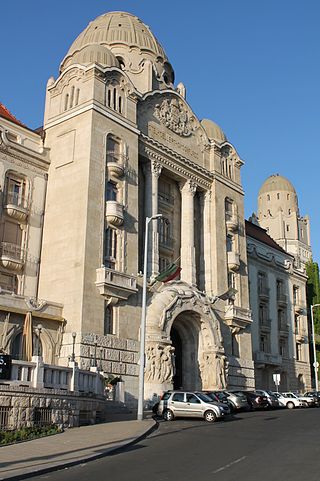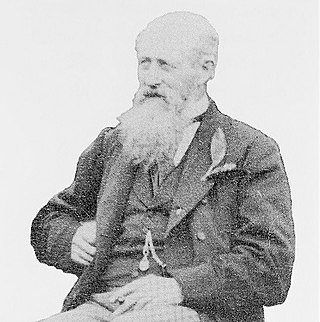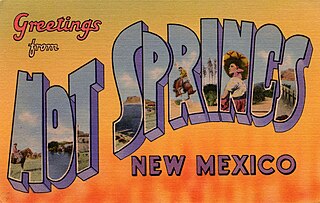
Buxton is a spa town in the Borough of High Peak, Derbyshire, in the East Midlands region of England. It is England's highest market town, sited at some 1,000 feet (300 m) above sea level. It lies close to Cheshire to the west and Staffordshire to the south, on the edge of the Peak District National Park. In 1974, the municipal borough merged with other nearby boroughs, including Glossop, to form the local government district and borough of High Peak.

The Roman Baths are well-preserved thermae in the city of Bath, Somerset, England. A temple was constructed on the site between 60 and 70 AD in the first few decades of Roman Britain. Its presence led to the development of the small Roman urban settlement known as Aquae Sulis around the site. The Roman baths—designed for public bathing—were used until the end of Roman rule in Britain in the 5th century AD. According to the Anglo-Saxon Chronicle, the original Roman baths were in ruins a century later. The area around the natural springs was redeveloped several times during the Early and Late Middle Ages.

Thermae Bath Spa is a combination of the historic spa and a contemporary building in the city of Bath, England, and reopened in 2006. Bath and North East Somerset council own the buildings, and, as decreed in a Royal Charter of 1590, are the guardians of the spring waters, which are the only naturally hot, mineral-rich waters in the UK. The Spa is operated by YTL Hotels.

Hot Springs National Park is a national park of the United States in central Garland County, Arkansas, adjacent to the city of Hot Springs. Hot Springs Reservation was initially created by an act of the United States Congress on April 20, 1832, to be preserved for future recreation. Established before the concept of a national park existed, it was the first time that land had been set aside by the federal government to preserve its use as an area for recreation. The hot spring water has been popularly believed for centuries to possess medicinal properties, and was a subject of legend among several Native American tribes. Following federal protection in 1832, the city developed into a successful spa town.

A spa is a location where mineral-rich spring water is used to give medicinal baths. Spa health treatments are known as balneotherapy. The belief in the curative powers of mineral waters and hot springs goes back to prehistoric times. Spa towns, spa resorts, and day spas are popular worldwide, but are especially widespread in Europe and Japan.

The Gellért Thermal Bath, also known as the Gellért Baths, is a bath complex in Budapest in Hungary. It is part of the famous Hotel Gellért in Buda.

Robert Rippon Duke was an English architect and surveyor who designed various prominent Victorian buildings in Buxton, Derbyshire.

Tskaltubo or Tsqaltubo is a spa resort in west-central Georgia. It is the main town of the Tsqaltubo Municipality of the Imereti province. It is known for its radon-carbonate mineral springs, whose natural temperature of 33–35 °C (91–95 °F) enables the water to be used without preliminary heating.

Aquae Arnemetiae was a small town in the Roman province of Britannia. The settlement was based around its natural warm springs. The Roman occupation ran from around 75 AD to 410 AD. Today it is the town of Buxton, Derbyshire in England.

Henry Currey (1820–1900) was an English architect and surveyor.

The Devonshire Dome building is a Grade II* listed 18th-century former stable block in Buxton, Derbyshire. It was built by John Carr of York and extended by architect Robert Rippon Duke, who added what was then the world's largest unsupported dome, with a diameter of 44.2 metres (145 ft). It is now the site of the Buxton Campus of the University of Derby.

Buxton Crescent is a Grade-I-listed building in the town of Buxton, Derbyshire, England. It owes much to the Royal Crescent in Bath, but has been described by the Royal Institution of British Architects as "more richly decorated and altogether more complex". It was designed by the architect John Carr of York, and built for the 5th Duke of Devonshire between 1780 and 1789. In 2020, following a multi-year restoration and redevelopment project supported by the National Heritage Memorial Fund and Derbyshire County Council, The Crescent was reopened as a 5-star spa hotel.

The Lukács Thermal Bath is a historic indoor/outdoor thermal bath spa in Budapest, Hungary, heated by natural hot springs. All pools and four saunas can be used by all guests except for the optional area of the sauna world, which contains five more saunas, ice cooling pool, igloo and heated roman bench.
Thermal baths or spas in Budapest are popular tourist attractions as well as public comforts for the city's residents.

The Devonshire Royal Hospital was established as the Devonshire Hospital in 1859 in Buxton, Derbyshire by the Buxton Bath Charity for the treatment of the poor. The hospital was built in the converted stable block of The Crescent. The building is now known as the Devonshire Dome and it is the site of the Buxton Campus of the University of Derby.

The Slopes is a Grade-II-listed public park in Buxton, Derbyshire in England. The area was laid out by landscape architect Jeffry Wyatville in 1811 for William Cavendish, 6th Duke of Devonshire, as pleasure grounds for the guests of The Crescent hotel to promenade. The design of The Terrace was modified further by Sir Joseph Paxton in 1859.

St Ann's Well is an ancient natural warm spring in Buxton, Derbyshire in England. The drinking well is located at the foot of The Slopes and opposite the Crescent hotel and the Old Hall Hotel.

The Palace Hotel was opened in 1868 in Buxton, Derbyshire, England. It holds a prominent position in the town's central Conservation Area overlooking the town. It is a Grade-II listed building.

Truth or Consequences Hot Springs is a thermal spring system located in the Hot Springs Artesian Basin area of Truth or Consequences, New Mexico in Sierra County.

Arthur Stanley Wohlmann (1867–1943), also known as Arthur Stanley Herbert, was an English physician and balneologist, known for his significant contributions to the therapeutic use of the spa in New Zealand. Born in London, he qualified as a dentist in 1894 and moved to New Zealand in 1902. Wohlmann was appointed as the first government balneologist in Rotorua, where he played a pivotal role in developing the town into a renowned spa destination.























